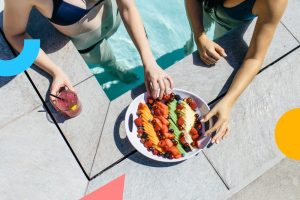
30 Jul
Search Engine Optimization (SEO) can certainly seem overwhelming, with so many “experts” out there claiming to get you on the top of Google. The most important thing to remember is that there are three major areas of consideration when first starting your SEO project list: 1. What Google does 2. What your competition does 3. What you do. Although you only have control over 1/3 of the organic search ecosystem, there are some simple steps you can take to impact your site, that have and always will be tried and true.
Websites are made up of individual pages, all of which are accessible with unique URLs (or should!). Each page has elements that you have complete control over, and doing so properly will help the way each is crawled, indexed and ranked.
The primary elements of a webpage are:
- URL
- Page title
- Header tags
- Content
- Images
- Internal linking
- Meta descriptions (not technically on the page, but helpful nonetheless!)
URL
The backbone of any webpage is the URL, or web address. Be sure your URLs follow the overall folder/subfolder structure of your website, and include the primary keywords relevant to your page.
Page Title
The page title is a primary factor when Google crawls your site and displays it in the SERPs (Search Engine Result Pages). Again, ensure the keywords used are relevant to the page. Google constantly updates its search algorithm and relies on more advanced AI when indexing websites, so properly describing your page content within the title helps Google understand what your page is about.
Heading Tags
The heading tags reside in the code, and support the page title and the content on the page. The primary focus of the page should be marked with an H1 tag, followed by H2 tags on supporting points or subheadings. Working in conjunction with your page title and URL, headings give search engines a robust understanding of your page’s purpose and flow.
Content
It’s been said a million times: “Content is king.” There needs to be a reason for a page to exist; a reason for someone to not only visit your site but stay and click to other pages of your website. Creating relevant, timely content is the key to making both users and search engines happy. Write for the customer, using keywords that are relevant to the page in question.
Images
Images are a form of content, and can be optimized just like text to help build a page’s strength. Each image should have a unique file name, with “Alt” text describing exactly what the image is.
Internal Linking
Internal linking is more on the technical side of things, but each page should have navigational elements, from the global navigation through to the anchor text, that makes sense for search engines. It also helps to provide a good user experience for your visitors to easily access content on other pages. Good internal linking helps users seamlessly navigate your site without feeling the need to leave, and assists search engines when crawling your site.
Meta Descriptions
While meta descriptions are not a scoring factor for a page’s strength, they are one of the first points of contact for users, as they show up in the SERPs. A well written meta description can aid in Click Through Rate, which IS a scoring factor. Keep it specific to the page, with a call to action, enticing the user to click through to your site. Given this is the entry point for users, make sure the expectation you set in the SERPs is delivered on once they visit your page. Another bonus for meta descriptions: they take up real estate in the SERPs. With Google constantly changing the SERP layout, organic listings are getting pushed further down the page. Your meta description can carve out valuable space in the SERPs.
In Conclusion
As you can see, there are a handful of items to continuously work on to improve your web pages and increase their strength. The result should be an increase in SERP presence and traffic. Need some help with improving your web pages? Check out our full range of SEO services.

![How to Successfully Use Social Media: A Small Business Guide for Beginners [Infographic]](https://b2webstudios.com/storage/2023/02/How-to-Successfully-Use-Social-Media-A-Small-Business-Guide-85x70.jpg)



![How to Successfully Use Social Media: A Small Business Guide for Beginners [Infographic]](https://b2webstudios.com/storage/2023/02/How-to-Successfully-Use-Social-Media-A-Small-Business-Guide-300x169.jpg)


